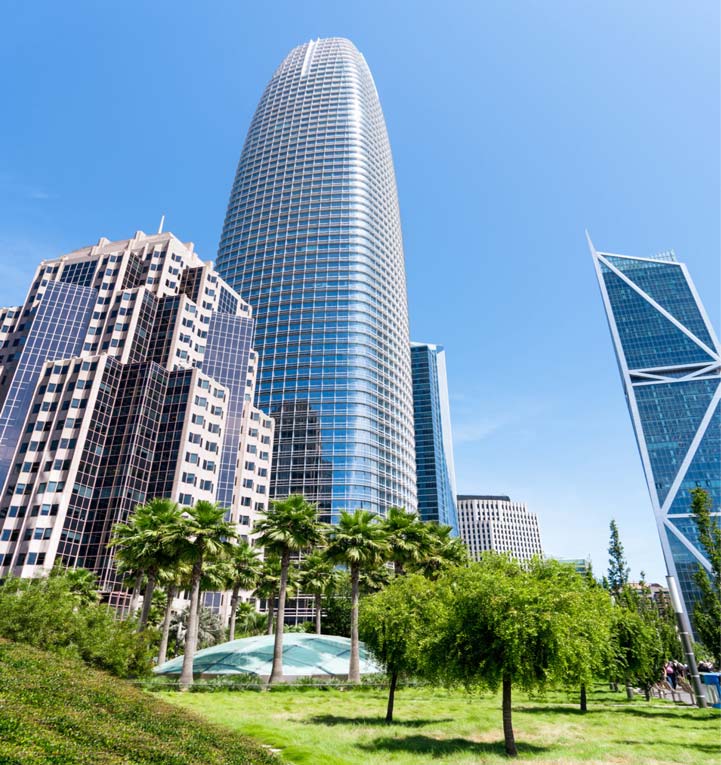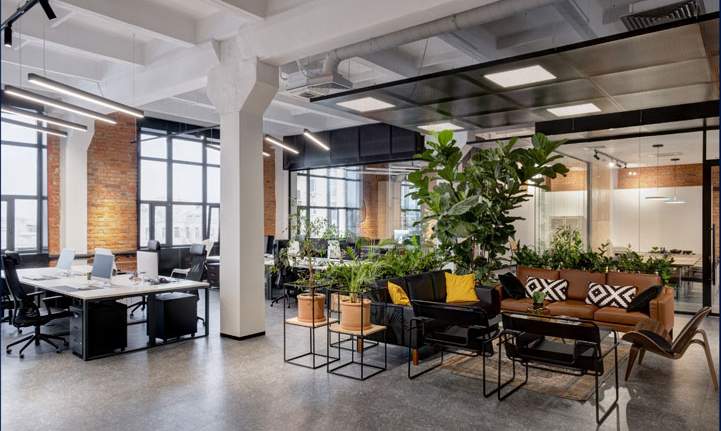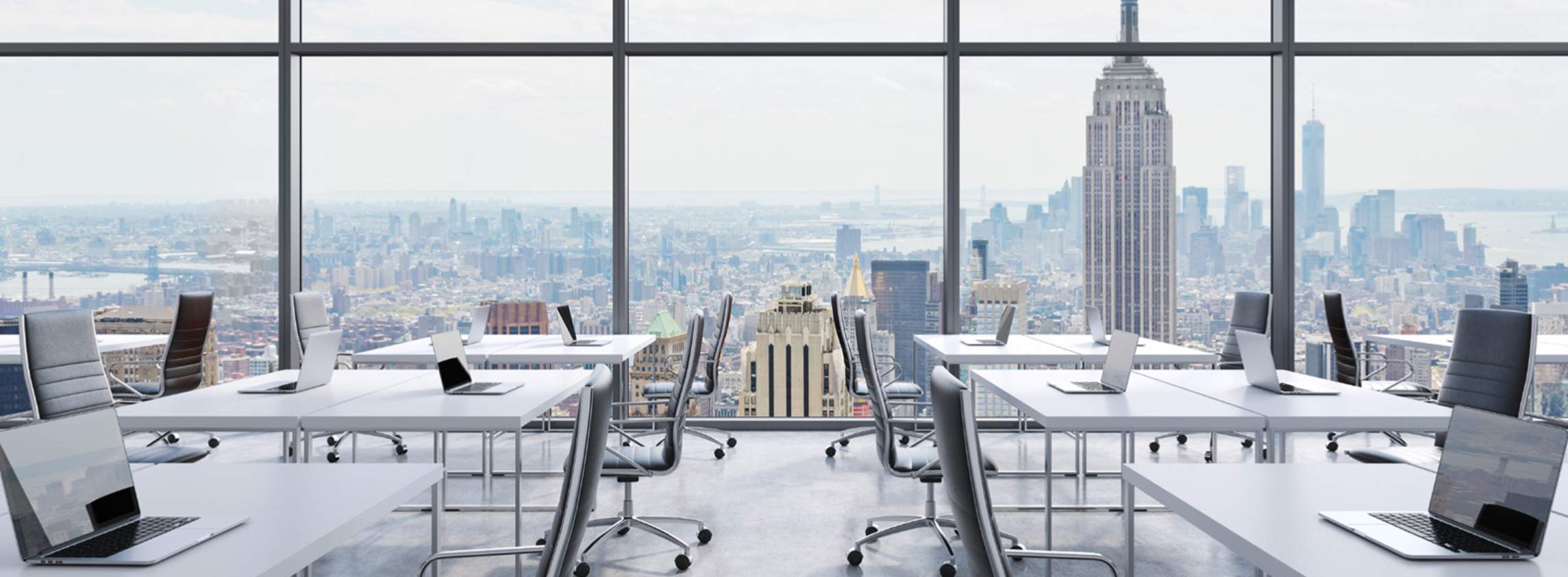Office occupiers are monitoring rising costs as they continue to demand top quality spaces to encourage workers to return to the office
Future rising costs and office occupancy
As the world adjusts to its new normal of learning to live with and manage Covid-19, occupiers are taking stock and using data to properly understand the impacts of the last two years. After many articles written on ‘return to the office’ or ‘the new normal’, many occupiers are undertaking the first real analysis of how their employees will use space post-Covid-19.
Economic and geopolitical uncertainty have taken centre stage again and this uncertainty has the potential to push already growing costs within supply chains even higher, impacting occupiers.
From growing raw material costs to increasing labour costs to keep up with rising inflation, it is likely that in the coming quarters, office occupiers will have to pay more to let and fit out their spaces in global cities. Fit out costs are beginning to tick up in some markets, and whilst rent is the usual indicator of increasing cost, service charge and capital expenditure will represent the largest increases in overall cost. These are expected to become two of the biggest contributing factors to rising occupier costs in the coming quarters.
Top quality spaces in prime central business districts around the world are fundamental to encouraging staff to return to the office and attract new talent; these rising costs are therefore unlikely to deter many office occupiers.
The number of workers returning to offices is rising in many global regions. In North America, workers are beginning to return in high numbers to offices and firms are starting to reintroduce ‘return to office’ policies. This trend is contrasted with workers in Shanghai where surging infections at the time of writing have seen many staff members return to working from home. Each quarter, the Savills team of expert local tenant representation professionals and researchers present a snapshot of occupancy costs for prime office space across global markets critical to our clients.
For this issue of Savills Prime Office Costs (SPOC) insights, we spoke with local tenant agents to understand the drive to return to offices in their markets and how different regions are creating and navigating their new normals.
Quarterly highlights
Despite conversations globally about rising costs due to supply-side issues, inflation, and political and economic uncertainty, net effective costs to occupiers have held remarkably steady. This is possibly due to quarter payment dates for the first quarter of the year. Face rents have, on average, remained flat in local currencies and the increasing additional costs have yet to appear across large numbers of global markets. Fluctuating exchange rates due to increased uncertainty have produced the appearance of declining costs for many markets in US dollar terms during the first quarter of 2022, while in local currencies, costs have broadly remained constant from Q4 2021.
Cost increases could be seen in Asia Pacific markets such as Hong Kong, cities across China, and in Kuala Lumpur. These increases reflect updates in service charges as well as the beginnings of increasing costs to fit-out prime spaces. Face rents are starting to rise in Shenzhen, Shanghai, Kuala Lumpur, and Delhi, demonstrating increased activity in these markets. Other markets in the Asia Pacific region are yet to see increasing rents or additional costs, though these are expected across the globe in the coming quarters.
Cities in the United States saw slight cost increases over the past quarter as concessions remain high and increases in costs from supply shortages and increasing inflation are just starting to be felt in fit out costs. Occupiers in the United States, particularly in the finance and professional services sectors, remain keen to bring workers back to the offices when it is safe to do so, focusing on interior amenities that promote in-person collaboration and connections, as well as buildings with systems that support superior indoor air quality and wellness.
Similar to our Q4 update, most markets across the EMEA region saw declining total costs in dollar terms, averaging -1.8%, with currency fluctuations accounting for the majority of the fall. When measured in local currencies, costs are beginning to tick up across European markets. The lifting of lockdowns and work from home guidance has encouraged activity in the office leasing space across the region in the first quarter.

Market Insights
After two years of working from home – with many locations seeing return-to-office plans derailed by new Covid-19 variants – a growing number of firms are eager to get staff back to the office
North America
In the United States, the return to office push is at its strongest since the pandemic began, with some large companies calling employees back, even if using a hybrid-working model. Several major tech companies have made return announcements and other industries had been targeting late March for workers to begin to return. For many major US markets, building key card entry data is at its highest of the pandemic now. In most cities, offices are seeing between 30% and 50% worker occupancy on a daily basis.
Asia Pacific
Across such a broad geography, working practices vary widely but very generally, we find that international firms are more inclined to adopt flexible working practices whereas local companies tend to take a more traditional approach. Other city variables include average apartment size, the prevalence of multi-generational households, ease of commute, and access to IT infrastructure among other factors. As ESG issues become more widely adopted, this is also encouraging businesses to think about staff wellbeing, work/life balance and carbon emissions. This will also help nudge employers towards flexible working. Currently, however, Covid-19 is clouding the issue and many companies, while moving towards an acceptance of working from home, are still hedging their bets, waiting for a clearer post-pandemic picture to emerge before committing wholesale to new ways of working. In this respect, it should be noted that cities including Hong Kong, Ho Chi Minh, Seoul, Tokyo, Mumbai and Delhi have started to relax restrictions and a return to the office can be expected from Q2, while at the time of writing, China has been imposing lockdowns (Shenzhen and Shanghai) in response to the latest surge in cases.
Europe
European markets present a much more varied picture in terms of workers returning to the office. Many locations are implementing a hybrid model in an attempt to bring workers back to the office at least some of the time. In Paris, the average professional worker is spending three days in the office and two days working from home.
Other cities such as Dublin, London, and Madrid are seeing companies taking a more varied approach, with a mixture of some companies bringing 100% of staff back, others have introduced a hybrid model, and other firms are not back at all. Financial services firms, with their strict compliance policies and apprenticeship models, are particularly pushing for workers to resume office working, for example. Some locations, such as the UK and the Netherlands, have seen government work from home advice lifted, marginally boosting workers returning to the office.
Middle East
There has been a marked increase in return to the office from international occupiers as global office management policies have encouraged a return to office working in other major cities. Approximately 70% of workers have returned to offices in some capacity across Dubai. Most corporates however are implementing some form of hybrid working particularly in the legal and tech sectors where workers have more flexibility to carry out their jobs from outside the office.
Outlook
Occupancy
While there is the continued potential for black swan events, the likely trajectory for offices globally is an increased return to office working in some hybrid form. Workers are reluctant to give up the extra time and increased work-life balance to return to the daily commute, especially given rising fuel costs. However, employers and office occupiers are keen to bring their teams back to build relationships, promote company culture, and allow for greater managerial supervision.
Rising costs
While the rising costs for materials and labour are beginning to flow through to costs quoted to occupiers, the increases remain relatively low as a share of total cost in many markets. Over the coming months, Savills Research will be closely monitoring the rising costs and reflecting these increases in future updates.
Continued drive towards sustainability
With rising materials and energy costs eventually being passed to occupiers, sustainability will only become more important. From looking to green-certified buildings to addressing other elements of their ESG strategy, businesses and office occupiers will look to sustainable changes to lower their expenses while also attracting workers to their companies and back to the office.

METHODOLOGY
The Savills Prime Office Cost (SPOC) Index presents a quarterly snapshot of occupancy costs for prime office space throughout the world, as provided by our expert, local tenant representation professionals and researchers.
The adjusted annual all-in occupancy cost represents real-time transaction terms for 20,000 sq ft (2,000 sq m) of usable space based on a basket of the top five most expensive properties to calculate ultra-prime average. The North American markets use a sample of very high rent threshold buildings (leasing occurring at the highest end of market).
All costs are reported in an annual, standardised format of USD per sq ft of usable space to account for variations in currency, reflect local payment protocols, and adjust for measurement practices across the globe. We have also factored in the credit value to the tenant generated from abated rent and the cost associated with fitting out the premises in order to provide an ’all in‘ total occupancy cost in USD per usable square foot.
The fit-out costs were gathered from local Savills teams assuming the leasing scenario described above, plus the following:
i) 30% cellularisation with the remainder of space open plan,
ii) construction and cabling only (no furniture or professional fees).
